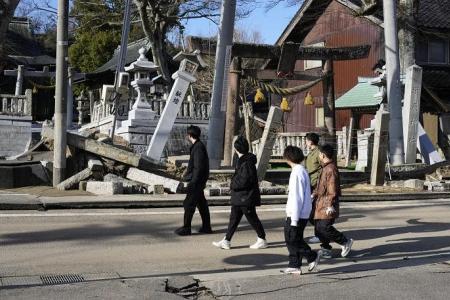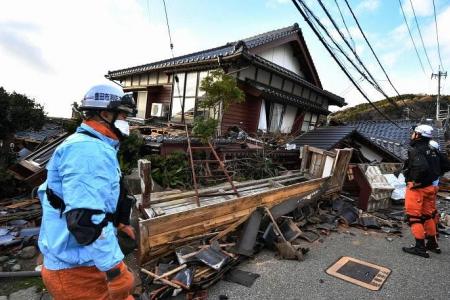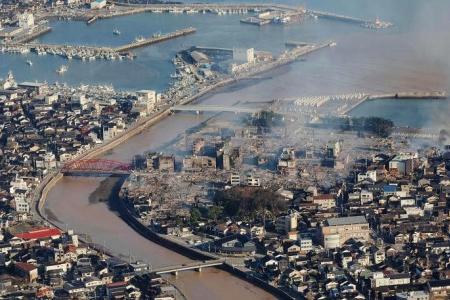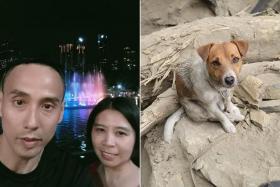Singaporeans relook Japan travel plans after earthquakes
Mr Kelvin Tan was answering nature’s call in Osaka’s Legoland Discovery Centre on Jan 1 when he felt dizzy and his vision blurred.
“I was in a confined space, and my vision started to blur while I was seated,” said the 32-year-old business owner, who is holidaying in Osaka with his wife, 31, and four-year-old son.
“I suspected that there was an earthquake right away as it reminded me of how we would feel the tremors in Singapore when there are quakes in Indonesia.”
The first thing on his mind was to leave the place with his family. His wife told him to carry his son and run.
Mr Tan said: “The staff at Legoland Discovery Centre was calm, and guided us to exit paths.
“We did not understand Japanese, so we could only follow the crowd.”
At least 48 people were killed after a powerful earthquake struck Japan on New Year’s Day.
With a magnitude of 7.6 and its epicentre in Ishikawa prefecture, the quake destroyed buildings, knocked out power to thousands of homes, and prompted residents in coastal areas to head to higher ground as tsunami waves hit Japan’s west coast.
The Japan Meteorological Agency (JMA) has issued tsunami warnings for the prefectures of Ishikawa, Niigata and Toyama.
A bright yellow message that read “Tsunami! Evacuate!” flashed across television screens to advise residents in specific areas near the coast to immediately leave.
Videos circulating online captured the chaos – houses collapsing, intermittent power outages and shaking signboards in train stations.
Thousands of army personnel, firefighters and police officers from across the country have been dispatched to the worst-hit area in the Noto peninsula in Ishikawa prefecture.
However, rescue efforts have been hindered by badly damaged and blocked roads, and the authorities say they are finding it difficult to assess the full extent of the fallout.
Mr Tan, an online content creator known as Mayiduo, has been in Japan since Dec 28, and was planning to stay till Jan 5.
He had begun his holiday at Kannabe Highland in Hyogo prefecture before heading to Kyoto – which is to the east of Hyogo – on Dec 30 and then Osaka, where he experienced the tremors. Osaka is about 455km from Noto peninsula.
“At the moment, the plan is to continue our plans at Osaka, but should the situation worsen, we will definitely be flying out,” Mr Tan said, adding that his next stop is Jeju, Korea.
While unaffected by the quake, other Singaporeans in Japan are also taking precautions and making changes to their itinerary.
An administrator from Singapore who wanted to be known only as Ms Lee said that she had cancelled her trip to Kyoto – which is about 345km away from Noto – due to the tsunami advisory.
Ms Lee and her husband have been in Japan since Dec 24. They were planning to head to Kyoto on Jan 3 but decided to remain in Osaka.
She said: “We did not want to take any chances even though we are not going to the coastal region of Kyoto. We did not want to be distracted over having to worry (about our safety) when we are there or have our families worry.”
Get The New Paper on your phone with the free TNP app. Download from the Apple App Store or Google Play Store now




